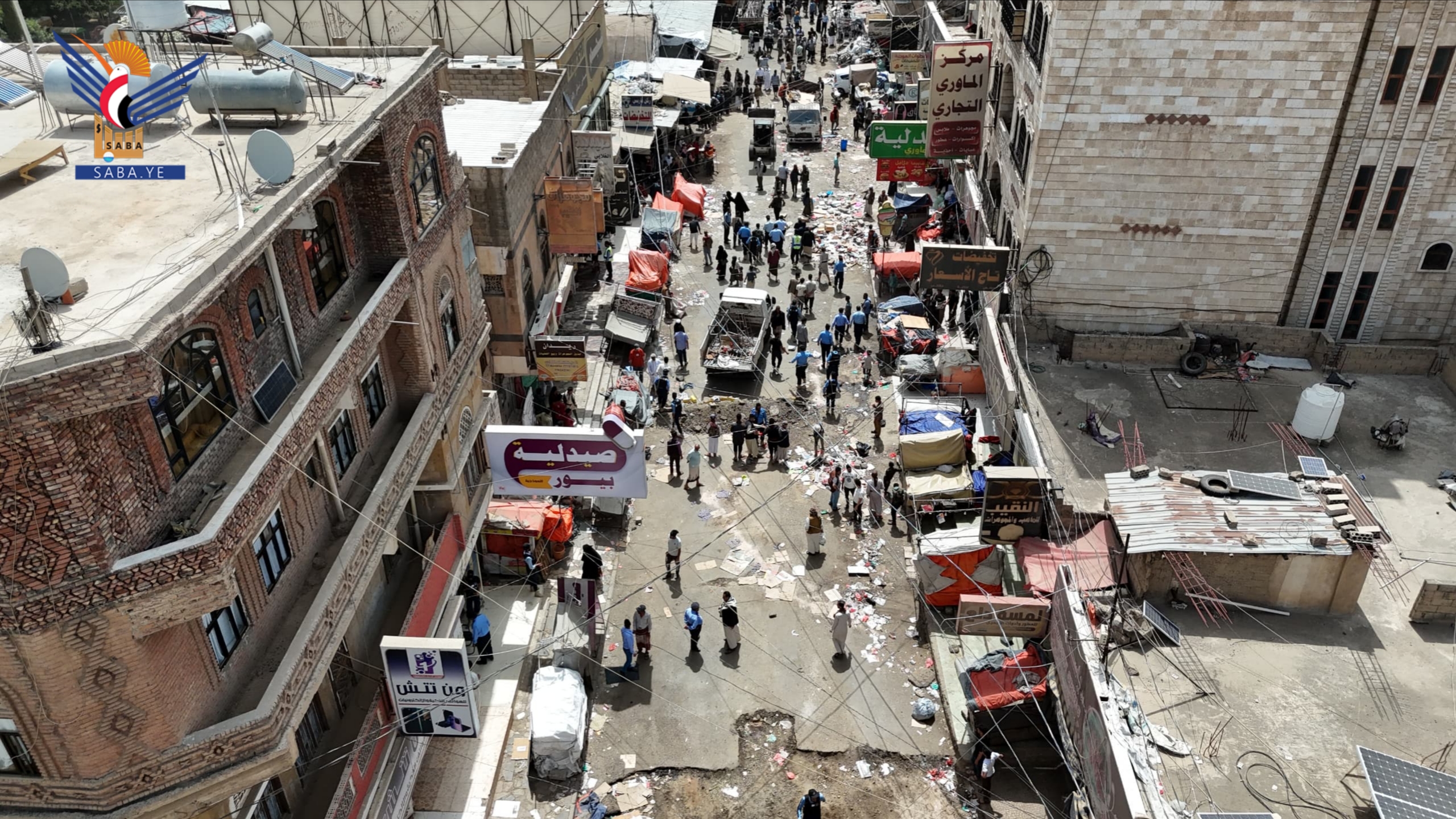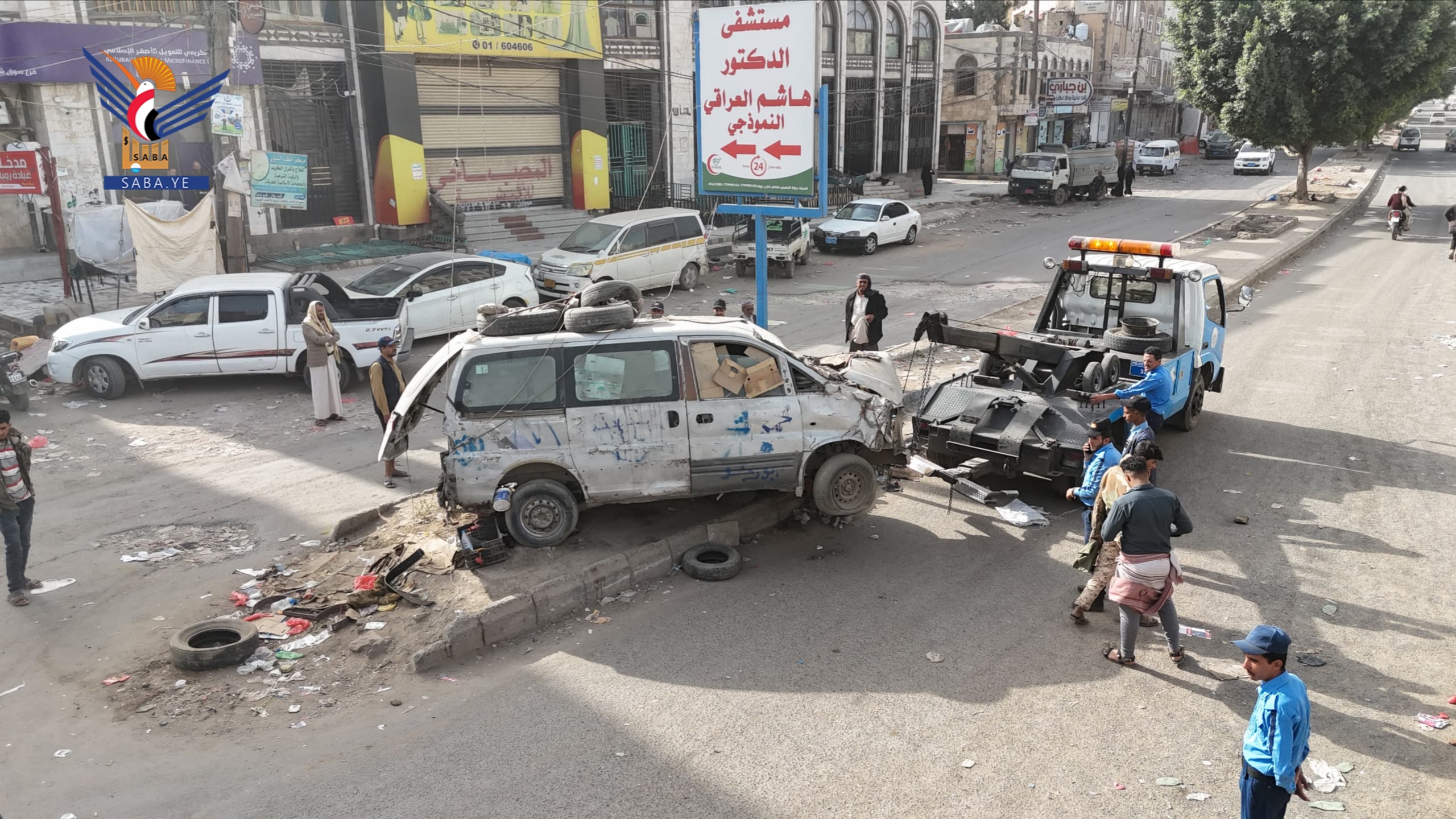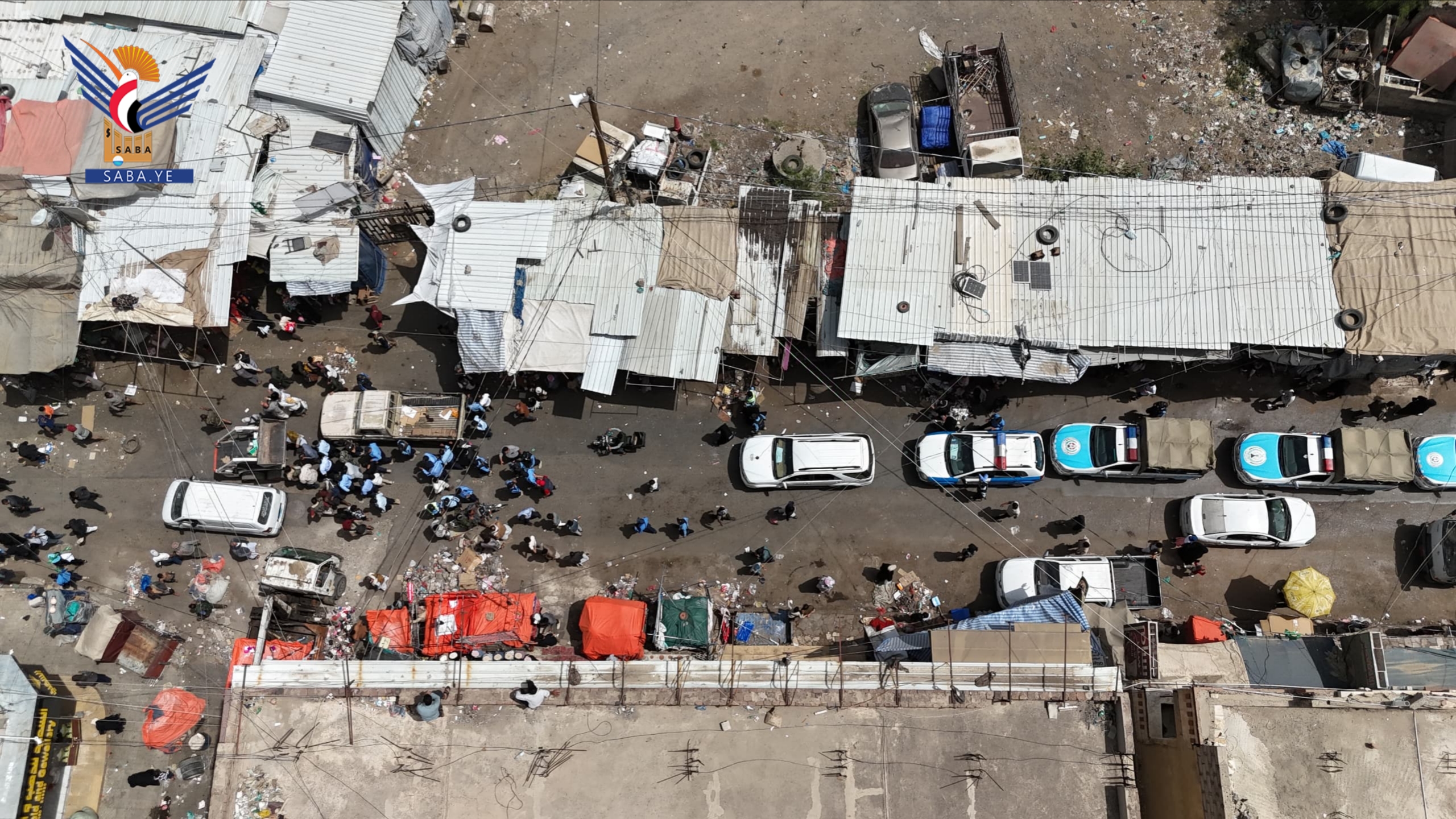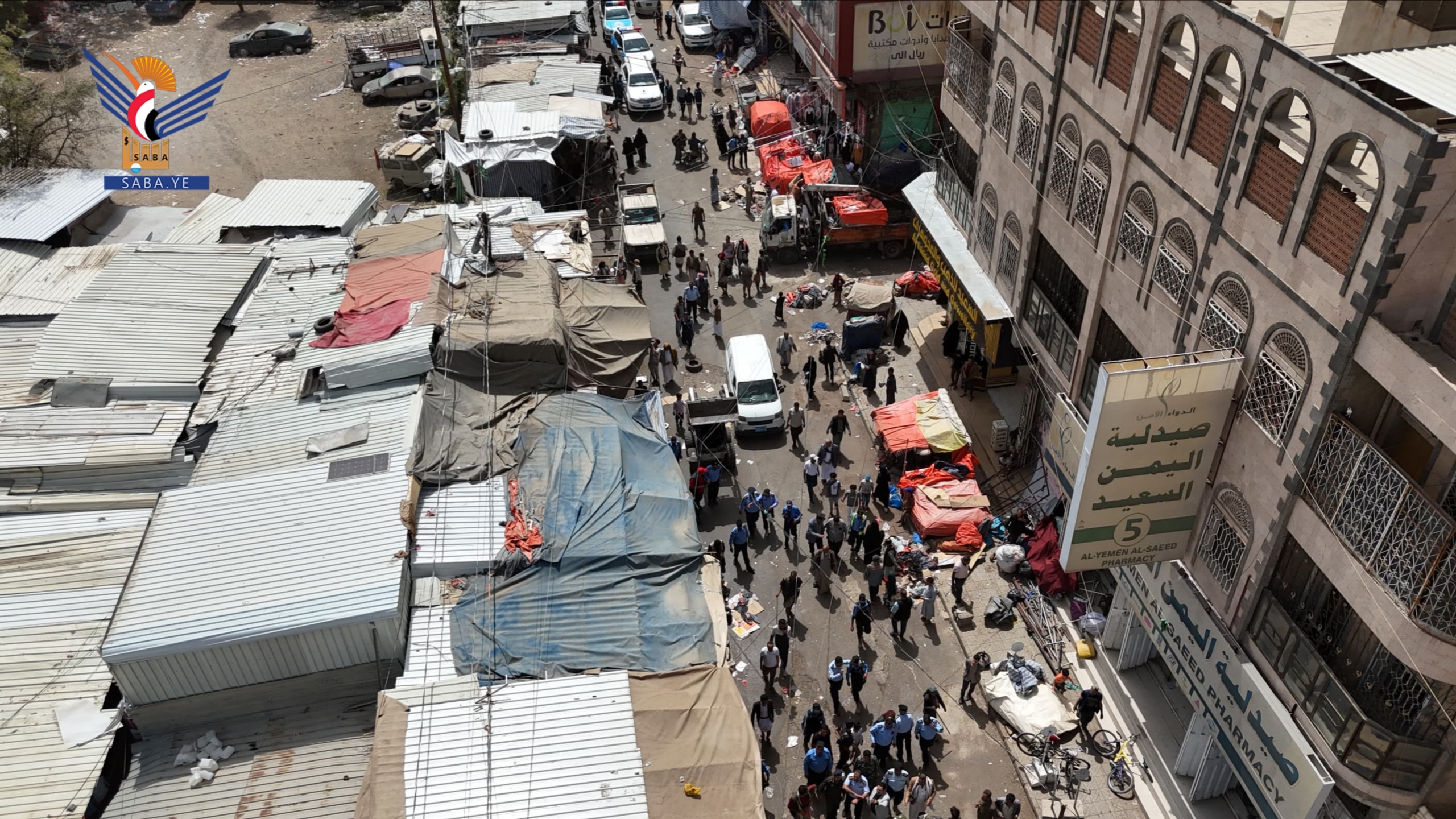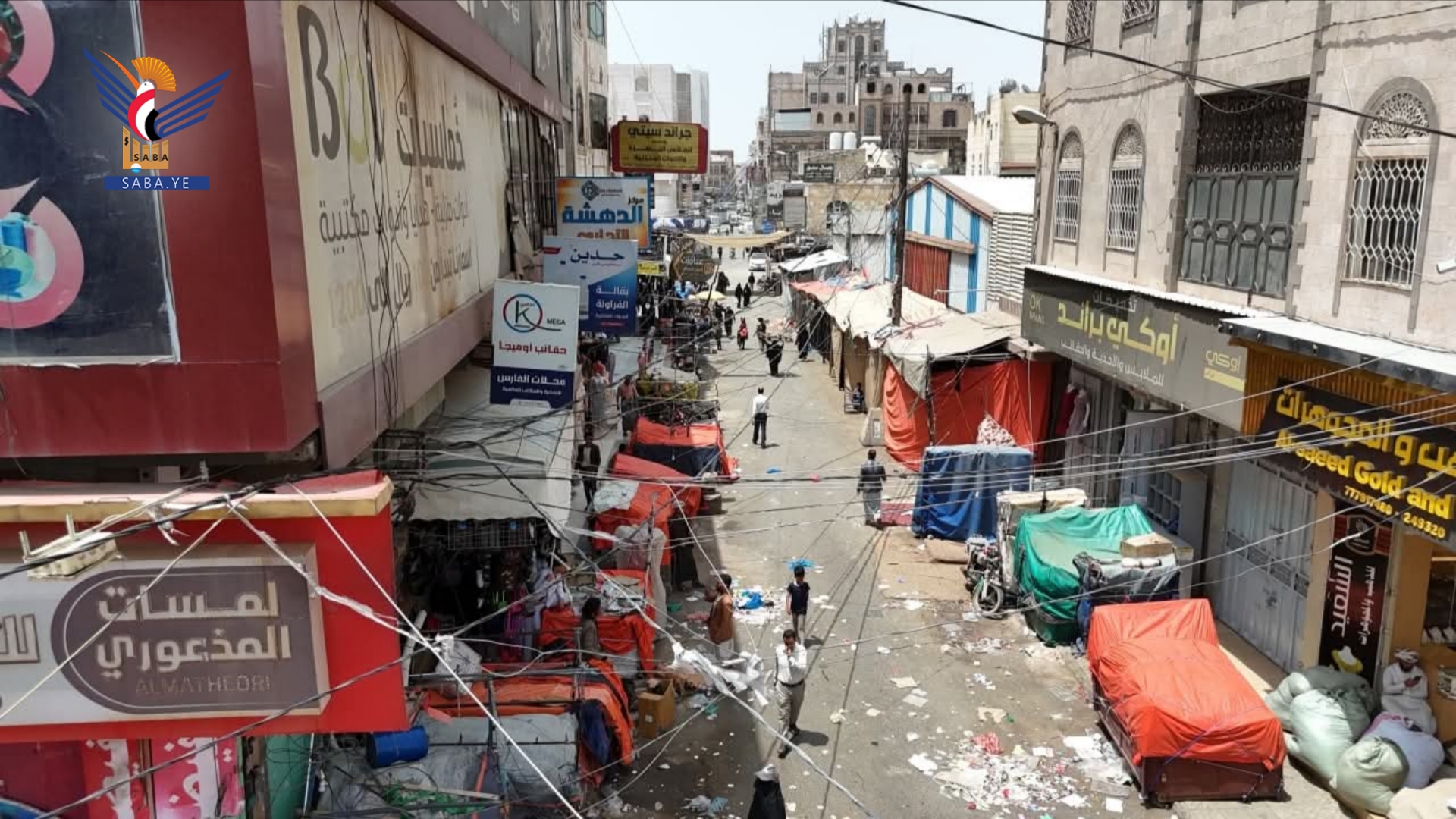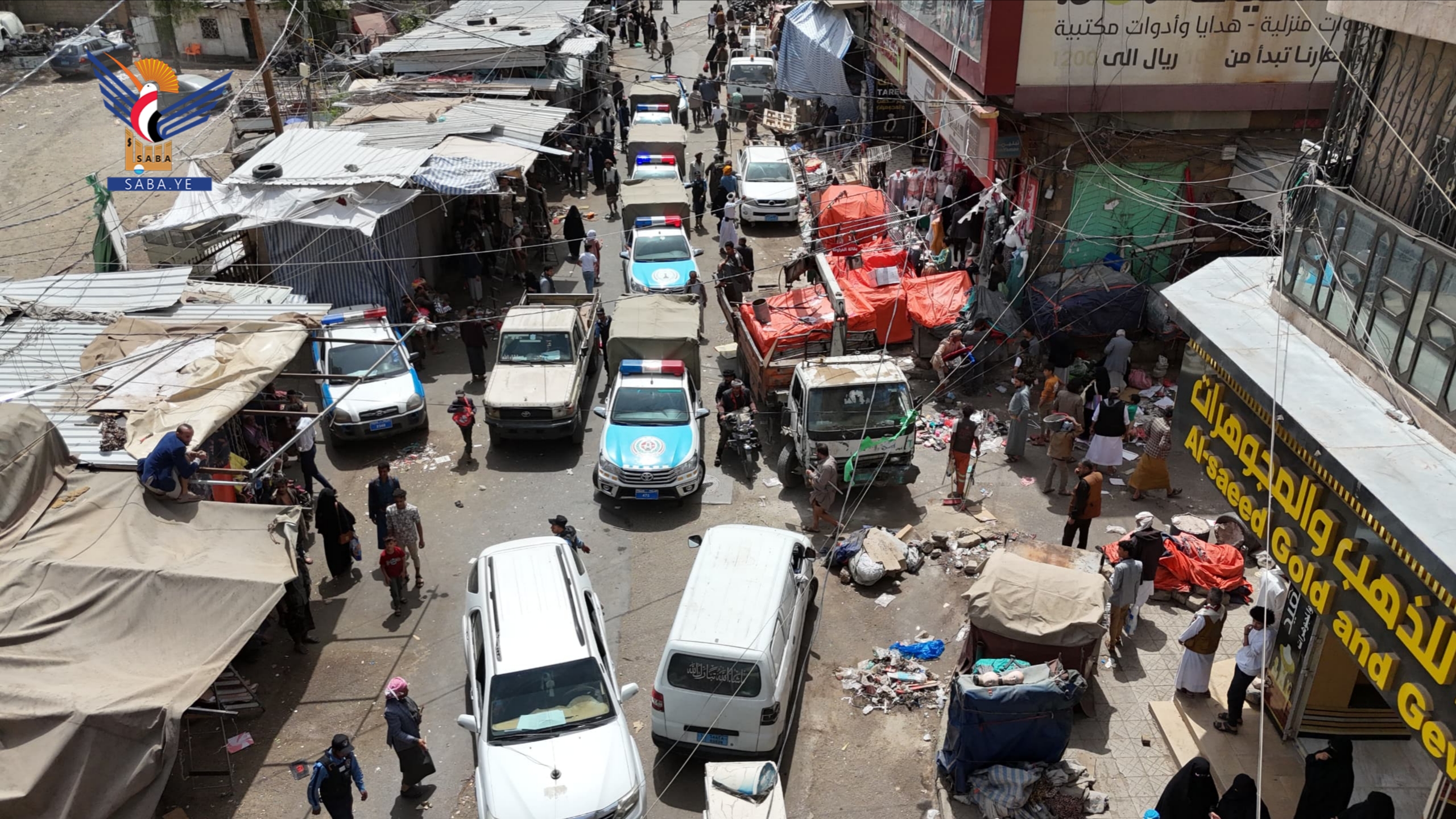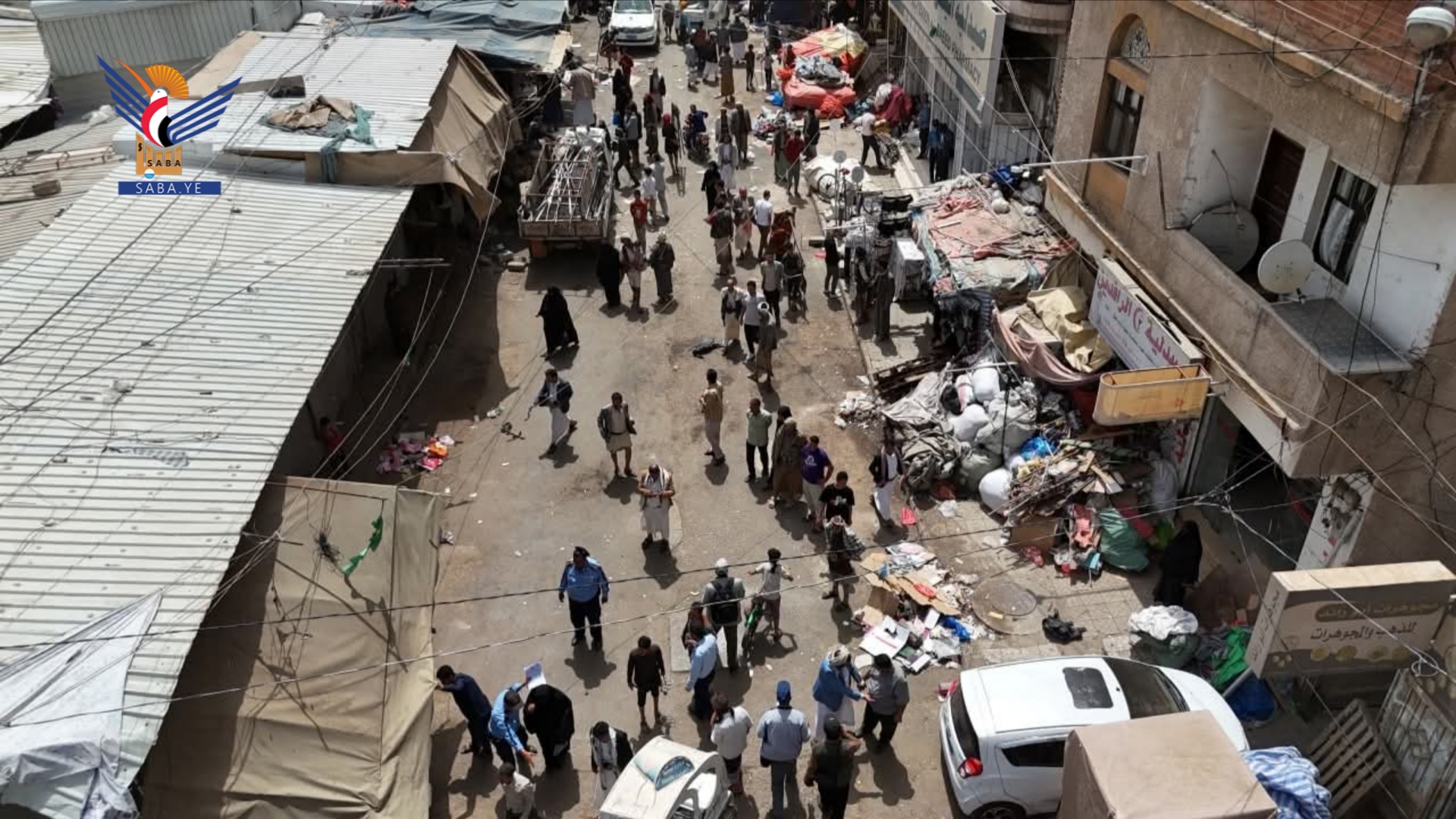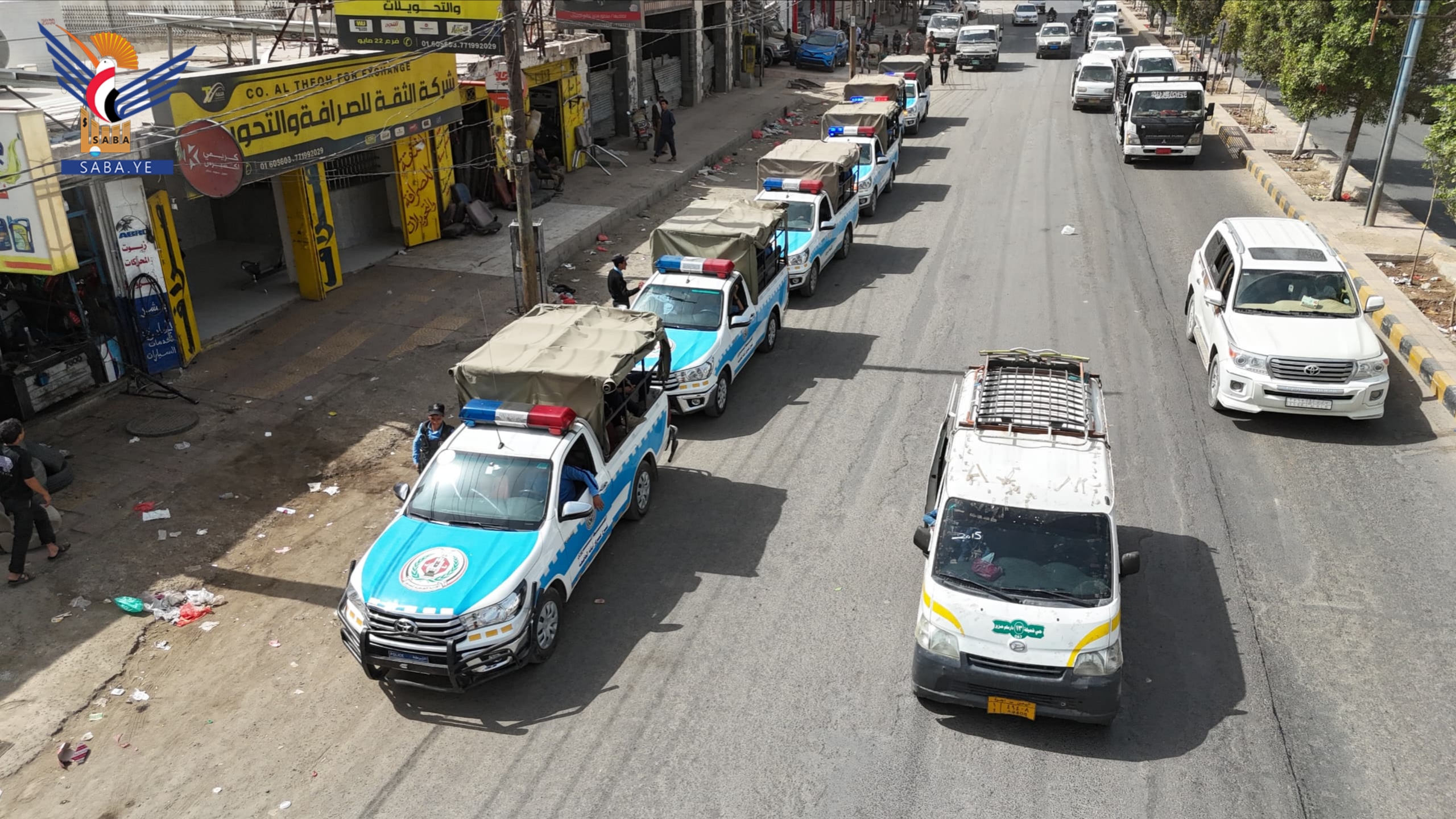
Sana'a - Saba:
For the second consecutive day, the joint field campaign continued to implement the traffic matrix, regulate traffic movement, remove random encroachments, unsightly phenomena, and causes of traffic congestion in the streets of the Capital Secretariat.
On its second day, the campaign—carried out by Traffic Police, the Public Works Office, and the Cleaning Fund and Project—targeted the removal of unsightly phenomena, random encroachments, and dilapidated vehicles from the streets of Khawlan, Al-Hathili Markets, Al-Hindawana, Dar Salam, Shamila, Al-Zahrawi, and Taiz Street.
Over two days, the campaign resulted in the removal of 64 dilapidated and scrap vehicles after notifying their owners, the clearance of over 350 vendor stalls and carts from main streets and sidewalks (relocating them to designated market areas), the removal of more than 84 tons of debris and waste, the collection of 52 written pledges from violating stall owners, the issuance of eight violation notices to non-compliant establishments, and the reopening of several blocked streets.
The directors of the Public Works Office in the Secretariat, Engineer Abdulsalam Al-Jaradi, the Cleaning Project, Ibrahim Al-Sarabi, and the Capital’s Traffic Police, Colonel Najeeb Al-Asadi, explained that the campaign—involving equipment and personnel from the Traffic Police, Public Works, and Cleaning departments—will continue until all streets included in the traffic measures matrix are cleared of random encroachments, vendor stalls, and vehicles.
They emphasized that the campaign comes in implementation of the directives of the leadership of the Ministry of Interior and the Capital Secretariat, with the participation of various concerned authorities, to remove random encroachments and violations that contribute to waste accumulation, epidemics, and traffic hazards, thereby preserving the aesthetic and civilized appearance of the capital, Sana’a.
They noted that the campaign successfully reopened several streets that had been closed for years, garnering widespread interaction and satisfaction from citizens, who expressed gratitude to the leadership of the Ministry of Interior and the Capital Secretariat for their efforts in ensuring public safety, protecting citizens' property, and reducing traffic accidents.
For the second consecutive day, the joint field campaign continued to implement the traffic matrix, regulate traffic movement, remove random encroachments, unsightly phenomena, and causes of traffic congestion in the streets of the Capital Secretariat.
On its second day, the campaign—carried out by Traffic Police, the Public Works Office, and the Cleaning Fund and Project—targeted the removal of unsightly phenomena, random encroachments, and dilapidated vehicles from the streets of Khawlan, Al-Hathili Markets, Al-Hindawana, Dar Salam, Shamila, Al-Zahrawi, and Taiz Street.
Over two days, the campaign resulted in the removal of 64 dilapidated and scrap vehicles after notifying their owners, the clearance of over 350 vendor stalls and carts from main streets and sidewalks (relocating them to designated market areas), the removal of more than 84 tons of debris and waste, the collection of 52 written pledges from violating stall owners, the issuance of eight violation notices to non-compliant establishments, and the reopening of several blocked streets.
The directors of the Public Works Office in the Secretariat, Engineer Abdulsalam Al-Jaradi, the Cleaning Project, Ibrahim Al-Sarabi, and the Capital’s Traffic Police, Colonel Najeeb Al-Asadi, explained that the campaign—involving equipment and personnel from the Traffic Police, Public Works, and Cleaning departments—will continue until all streets included in the traffic measures matrix are cleared of random encroachments, vendor stalls, and vehicles.
They emphasized that the campaign comes in implementation of the directives of the leadership of the Ministry of Interior and the Capital Secretariat, with the participation of various concerned authorities, to remove random encroachments and violations that contribute to waste accumulation, epidemics, and traffic hazards, thereby preserving the aesthetic and civilized appearance of the capital, Sana’a.
They noted that the campaign successfully reopened several streets that had been closed for years, garnering widespread interaction and satisfaction from citizens, who expressed gratitude to the leadership of the Ministry of Interior and the Capital Secretariat for their efforts in ensuring public safety, protecting citizens' property, and reducing traffic accidents.
